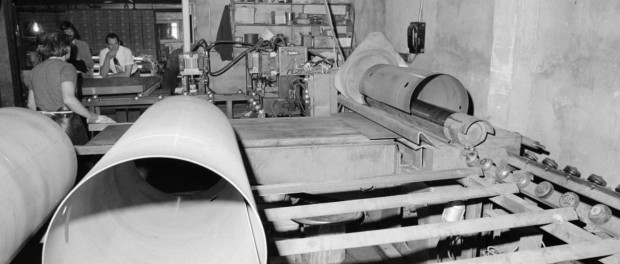My Montreal: Montréal-Est & Other Quebec Curios
 Montréal-Est is (in)famously known for their numerous factories and refineries. This particular example is from 1979 and the company is still in existence today in the area. Photo credit: Adrien Hubert/BAnQ (call number: E6,S7,SS1,D790618)
Montréal-Est is (in)famously known for their numerous factories and refineries. This particular example is from 1979 and the company is still in existence today in the area. Photo credit: Adrien Hubert/BAnQ (call number: E6,S7,SS1,D790618)
On some levels, Montréal-Est is a bit of an anomaly in the East End. For one, it is the only place in the East End that became an independent municipality following the 2004 referendum. Montréal-Est is one of the few places that refused to adopt the name of René Lévesque (Est) on the part that runs through the area. As a result, the street is still named Dorchester, an old relic from another time, in the borough. Though on other levels, Montréal-Est is another interesting place to live on the Island of Montréal. Famous, or infamous, for its factories and oil refineries, the buildings and infrastructure that populate as usual tell only half the story.
Numbering just under four thousand inhabitants, Montréal-Est is characterised by a large population that is unilingually French, 63% of all its inhabitants compared to Mercier—Hochelaga-Maisonneuve’s almost half of its population. 35% of Montréal-Est’s population can speak both French and English. Compared to other boroughs, Montréal-Est has a lower ratio of immigrants, with one in ten people being a new immigrant: indeed, to see the smallness of the immigrant population, in the 2011 census, there were only 335 total immigrants in the small municipality. It is difficult to estimate from where the borough’s newest immigrants come from, as all 40 of them never declared their country of origin.
Montréal-Est’s neighbours include Mercier—Hochelaga-Maisonneuve to the south and Anjou to the southwest. Its federal electoral district is La Pointe-de-l’Île, an electoral district shared with parts of Mercier—Hochelaga-Maisonneuve, while its provincial electoral district is Pointe-aux-Trembles.





